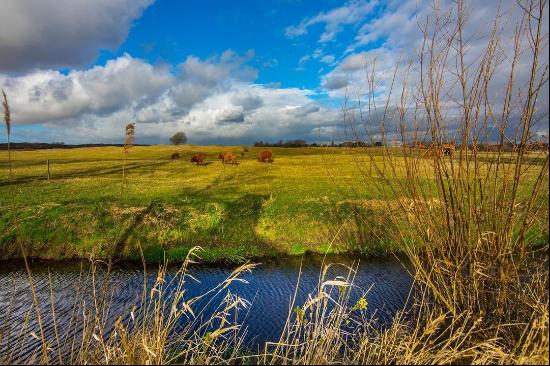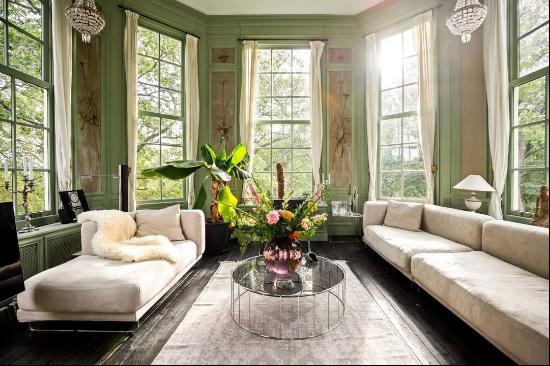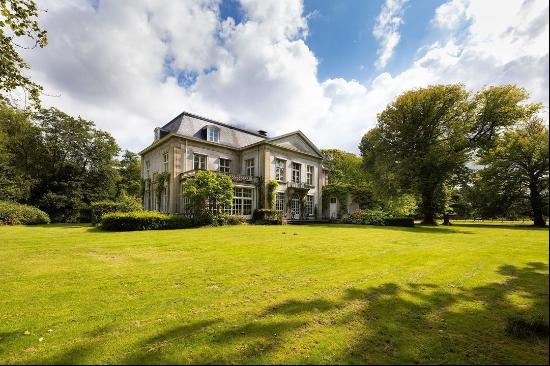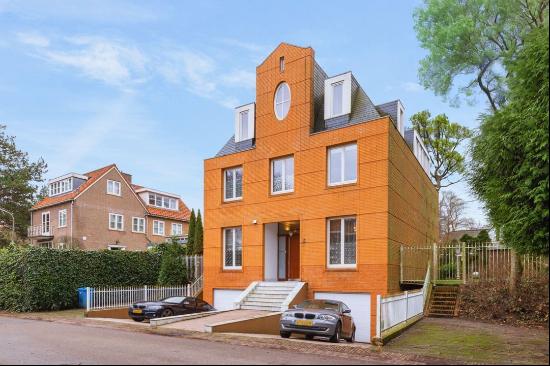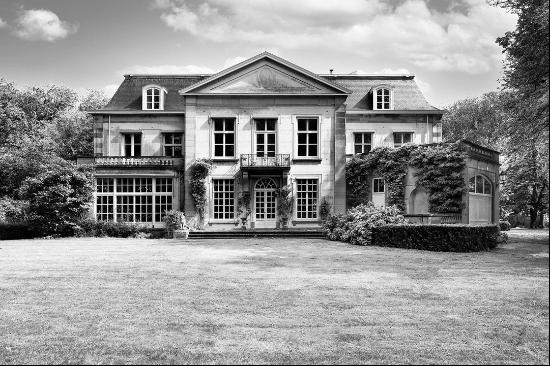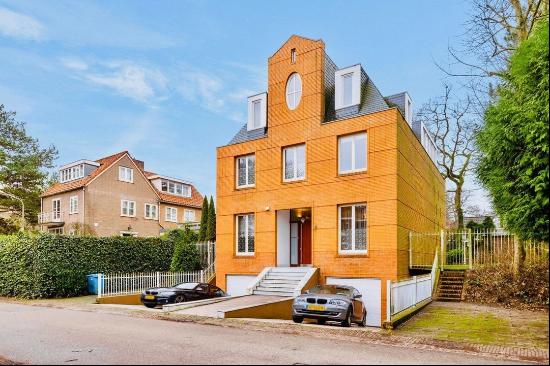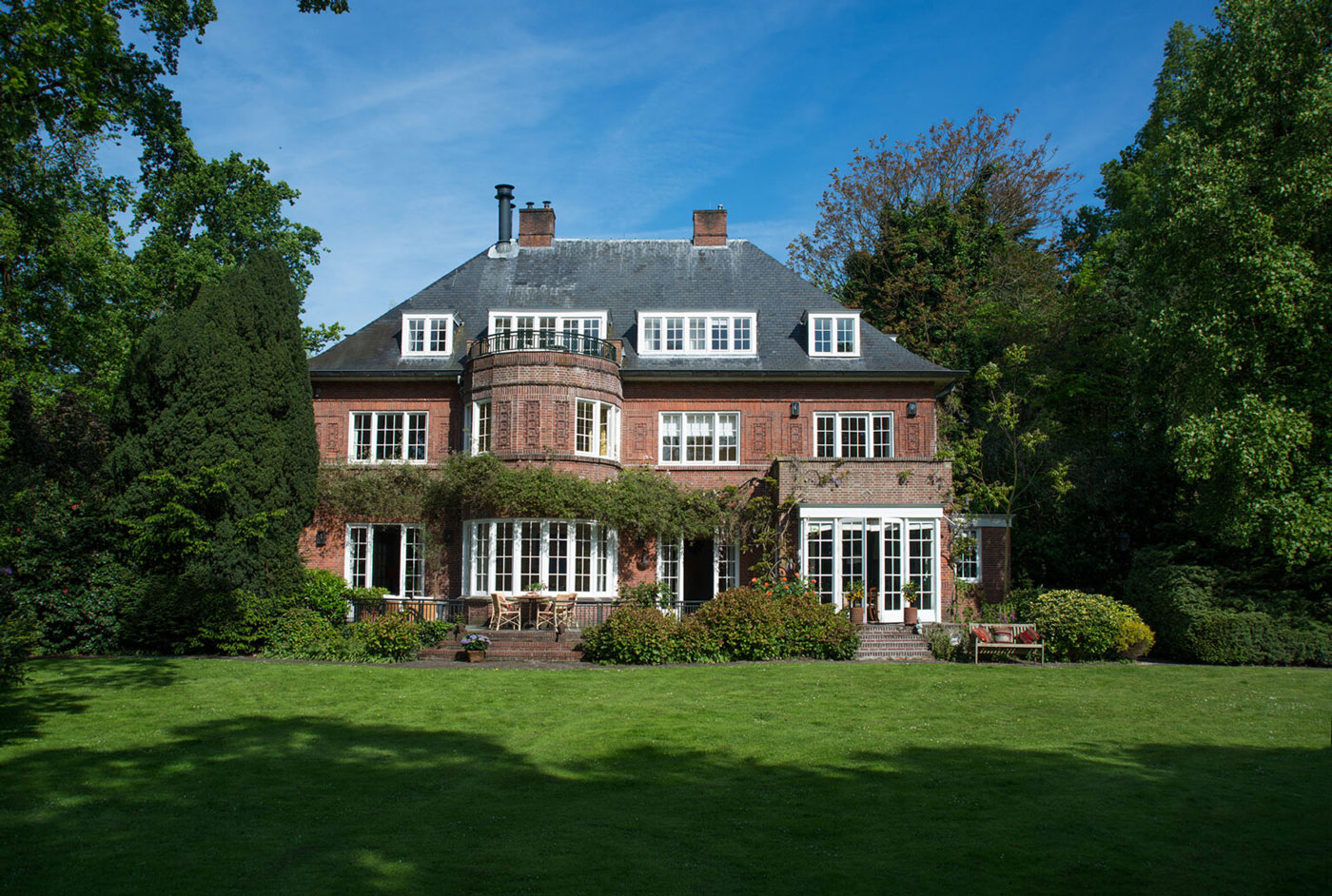

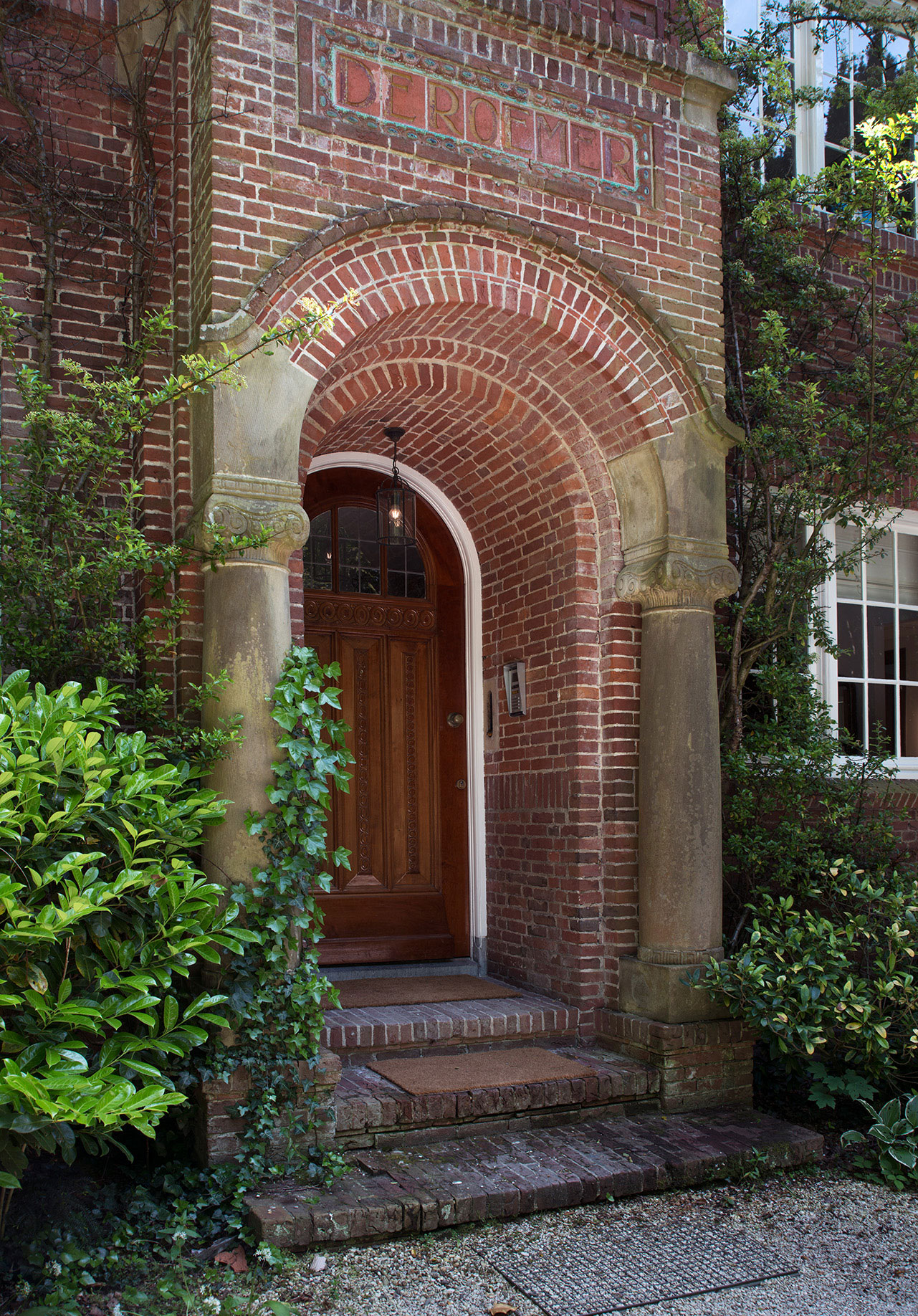
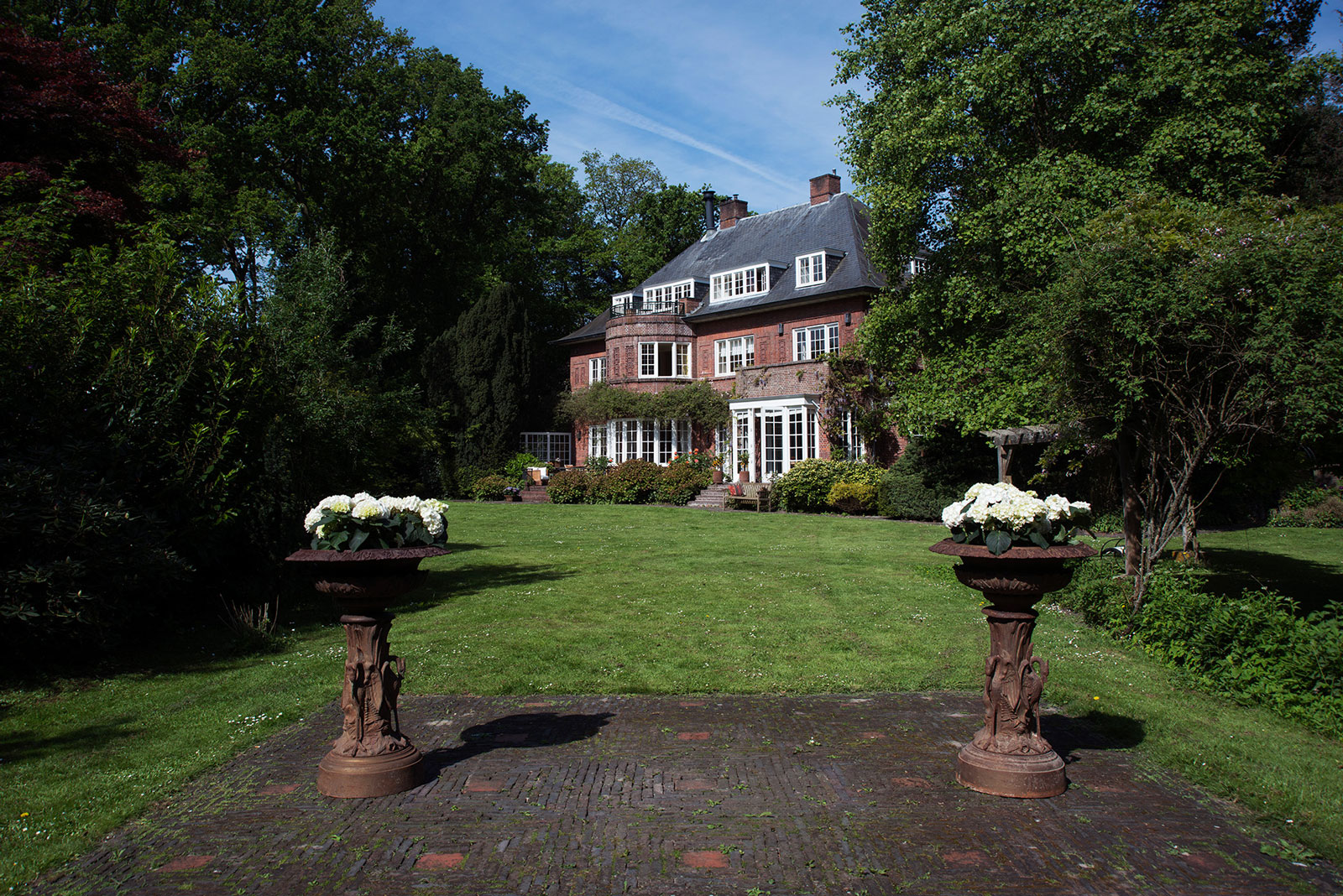
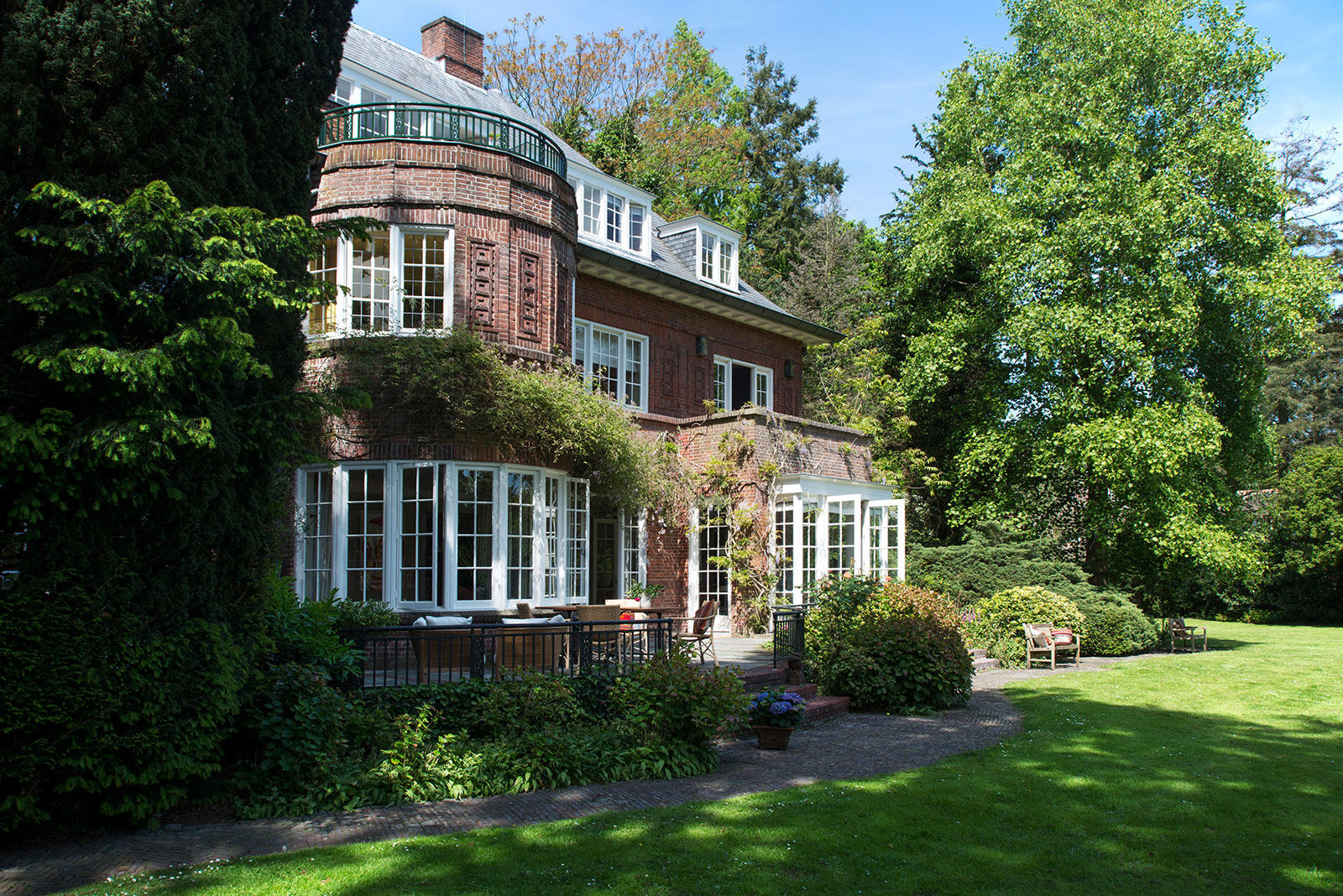
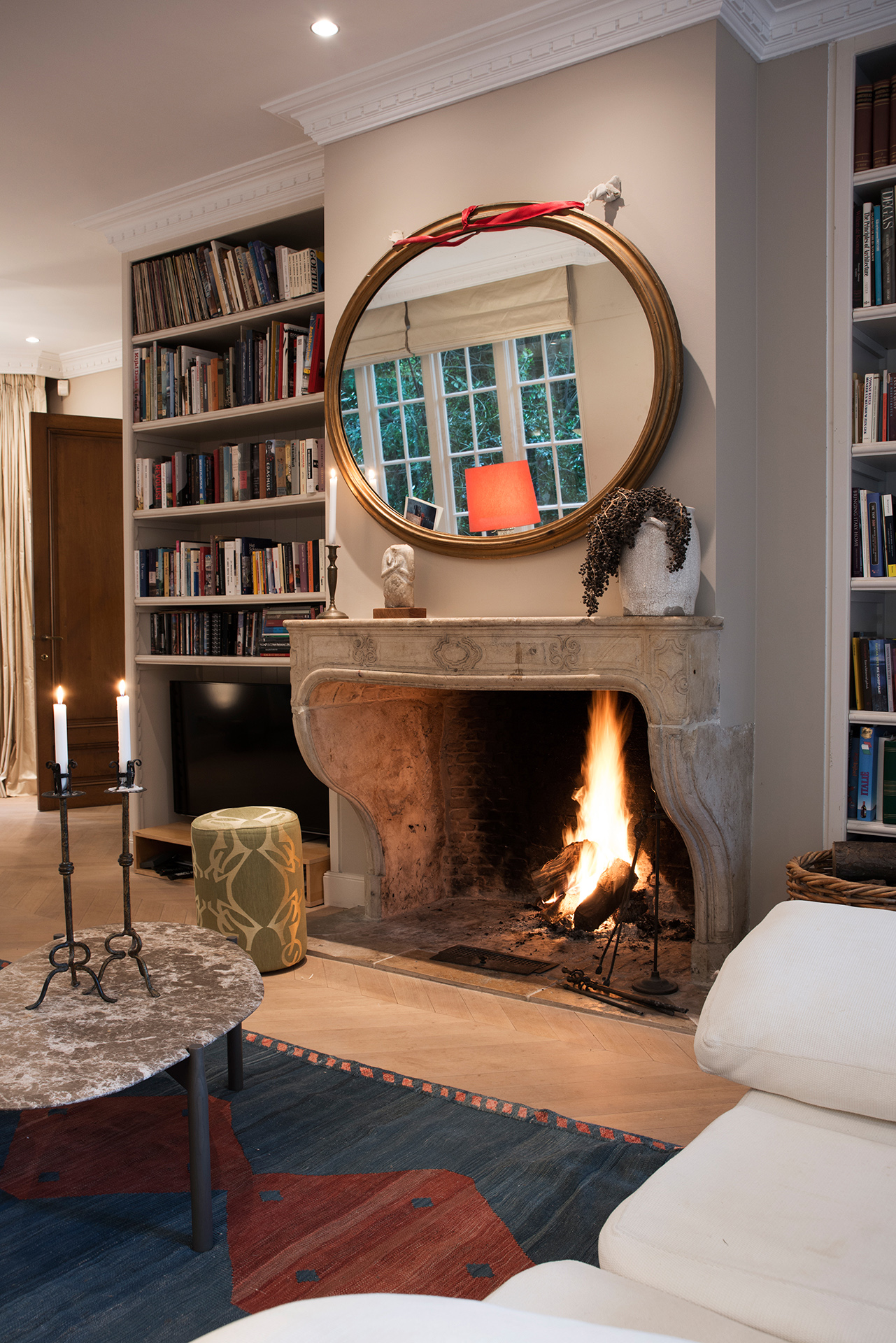
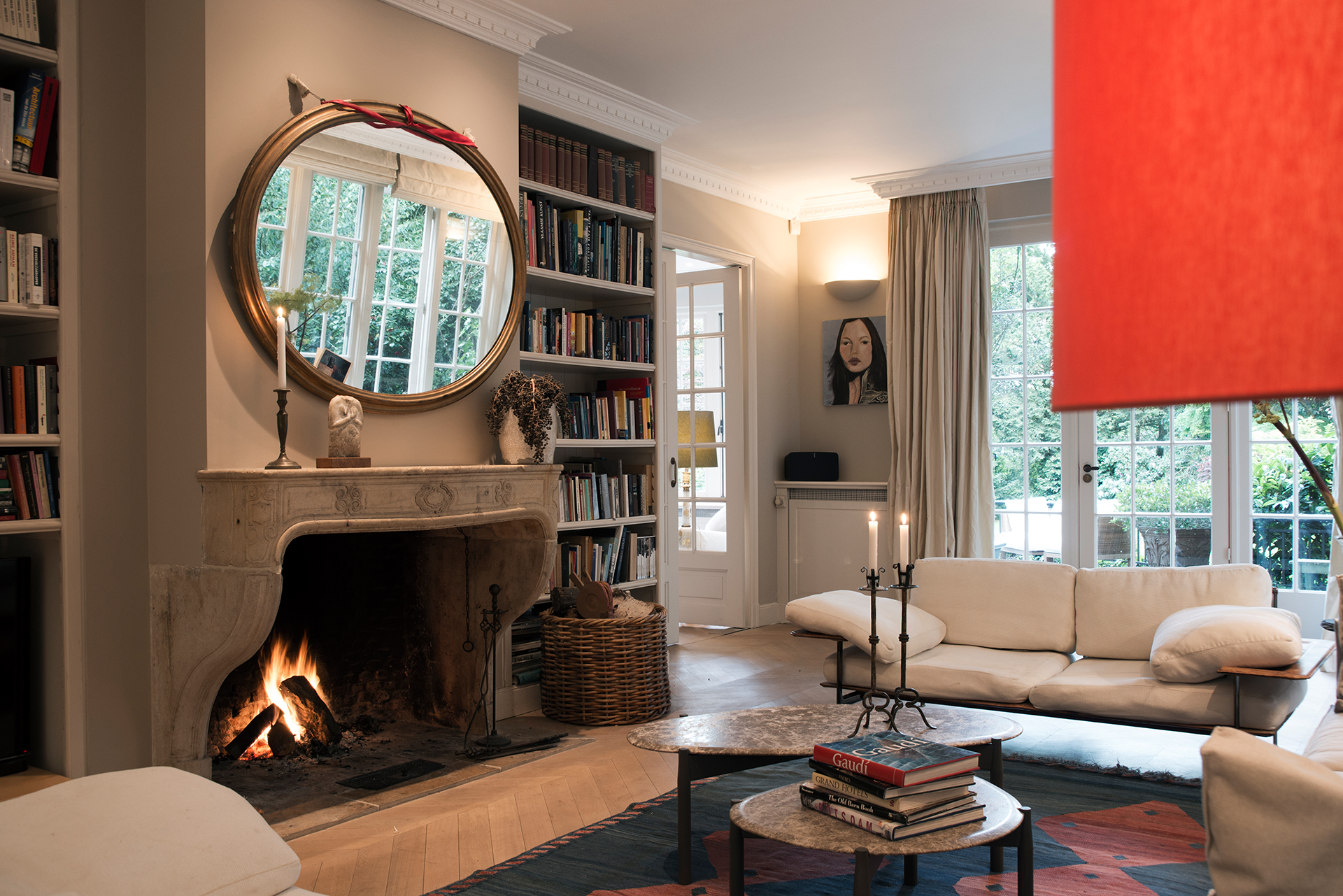

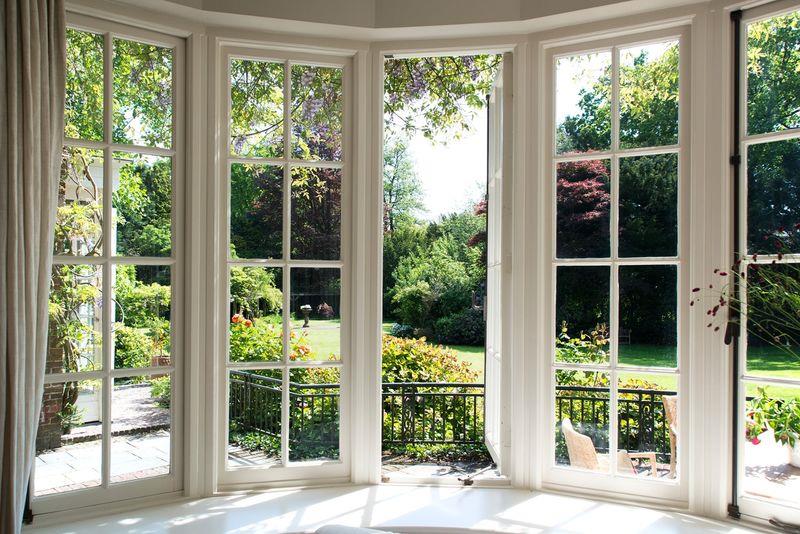
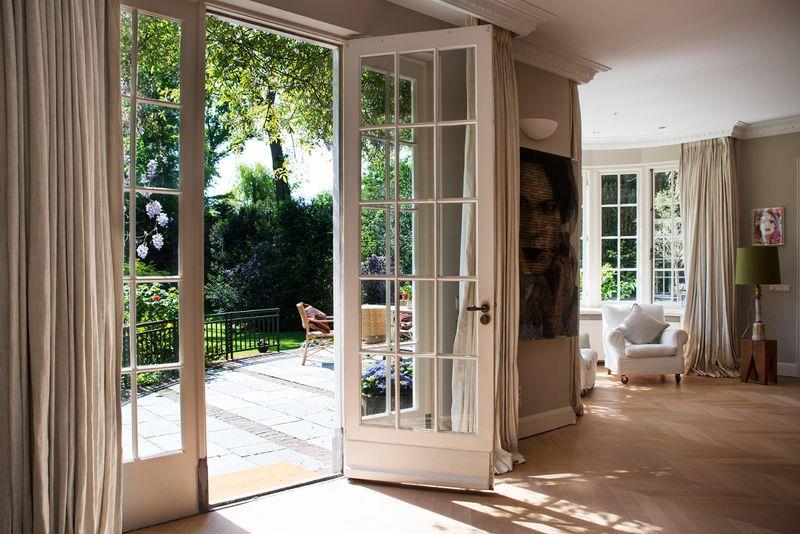
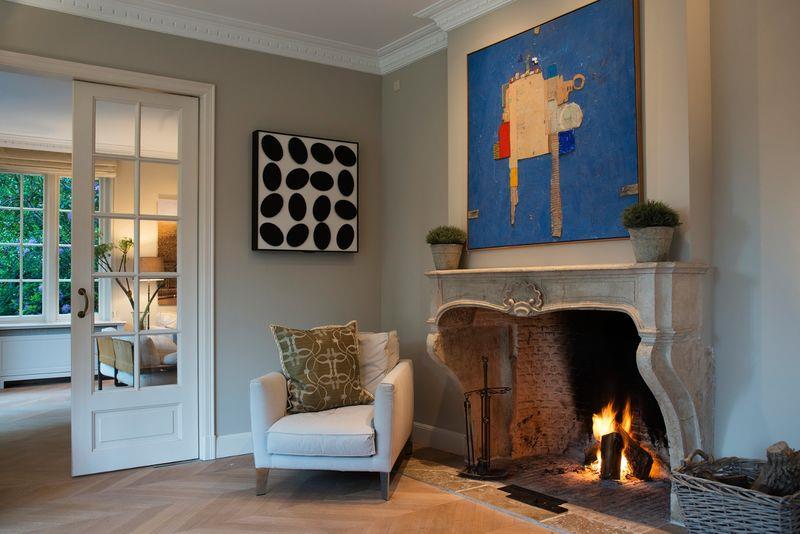
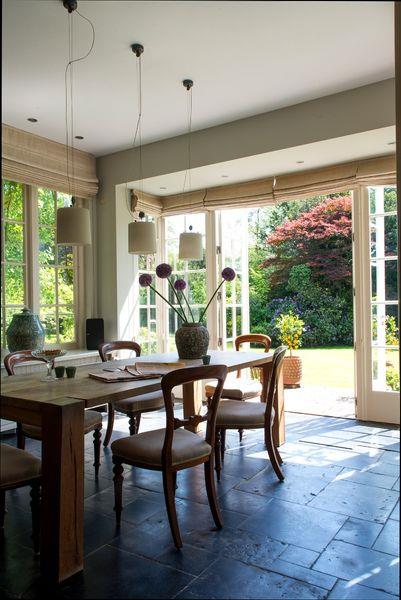
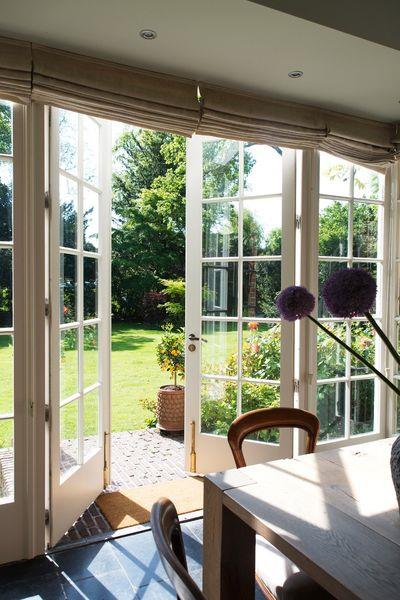
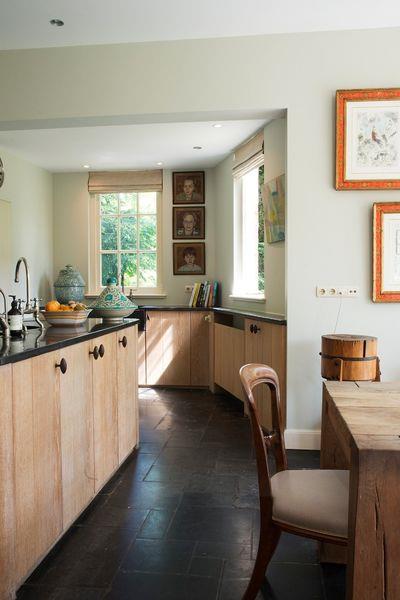

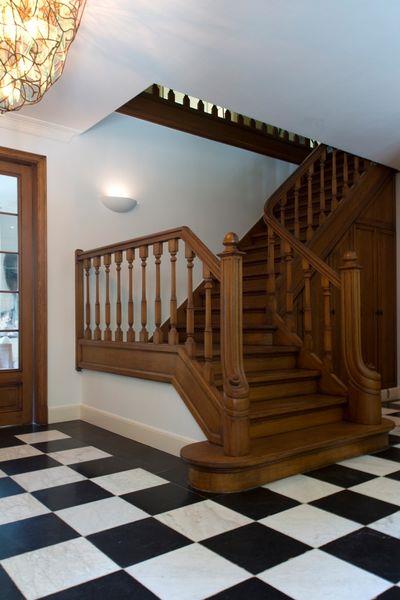
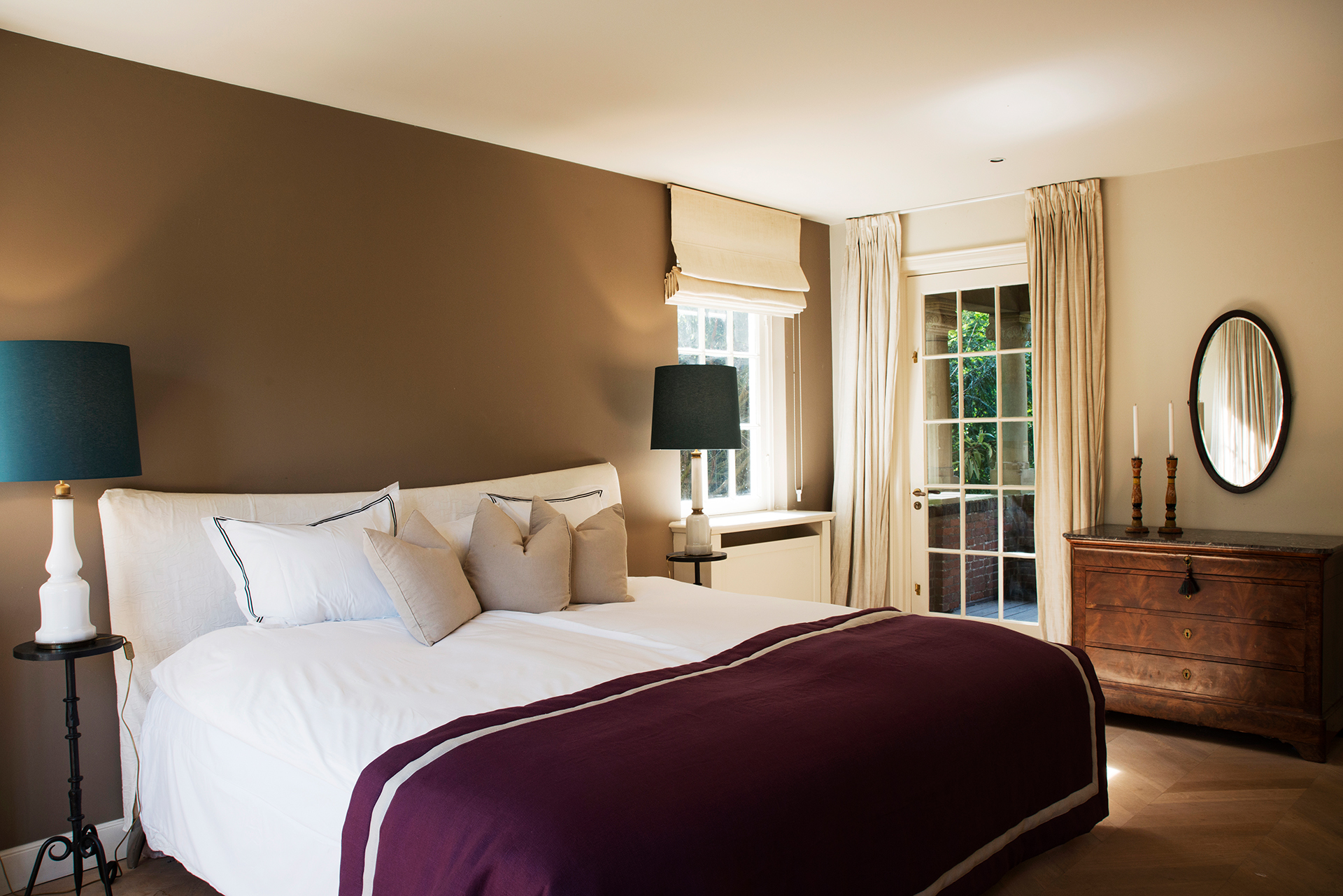
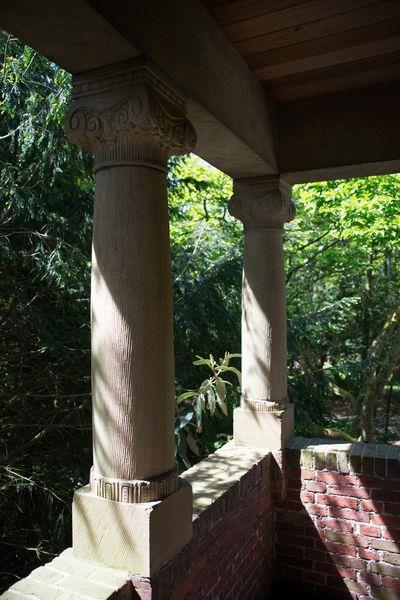

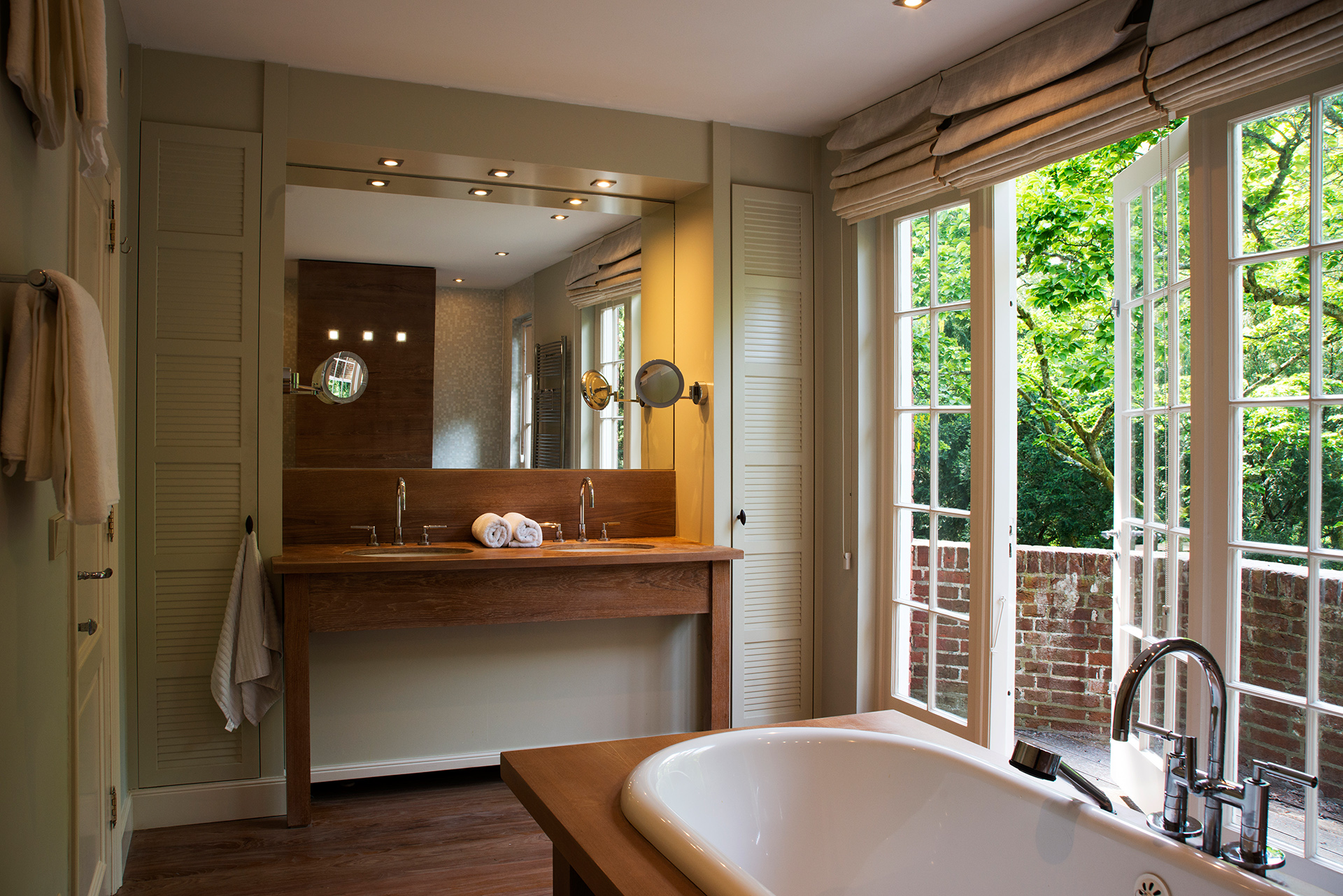
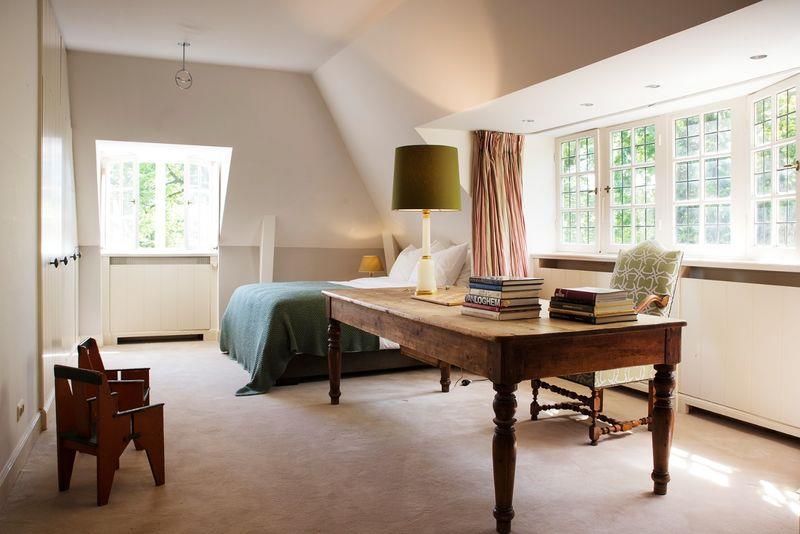
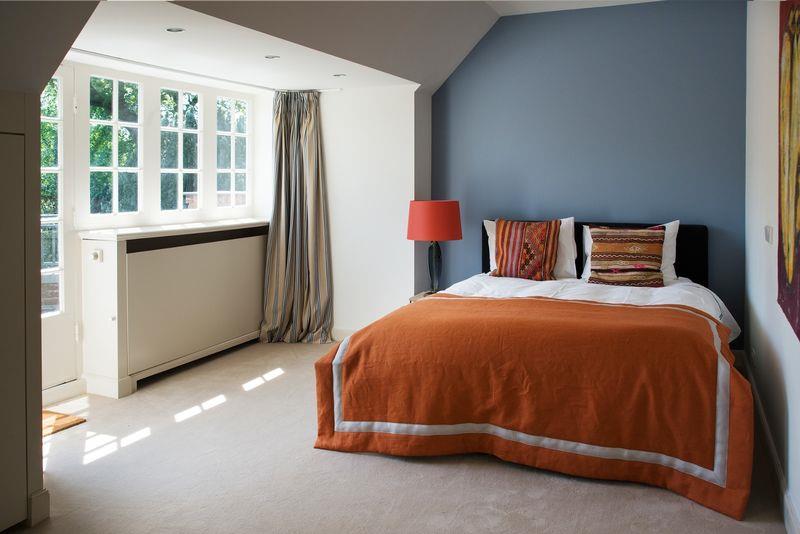

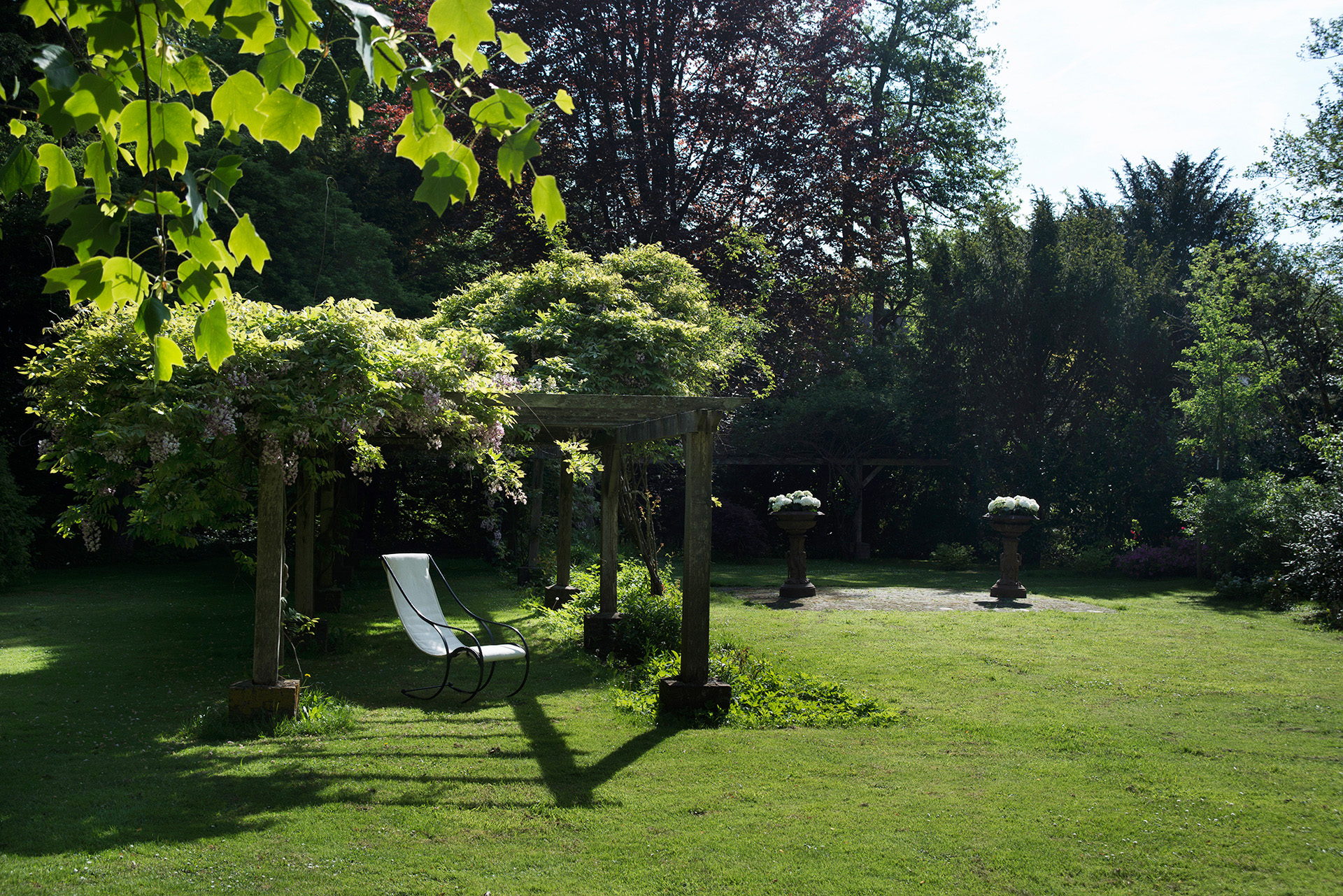
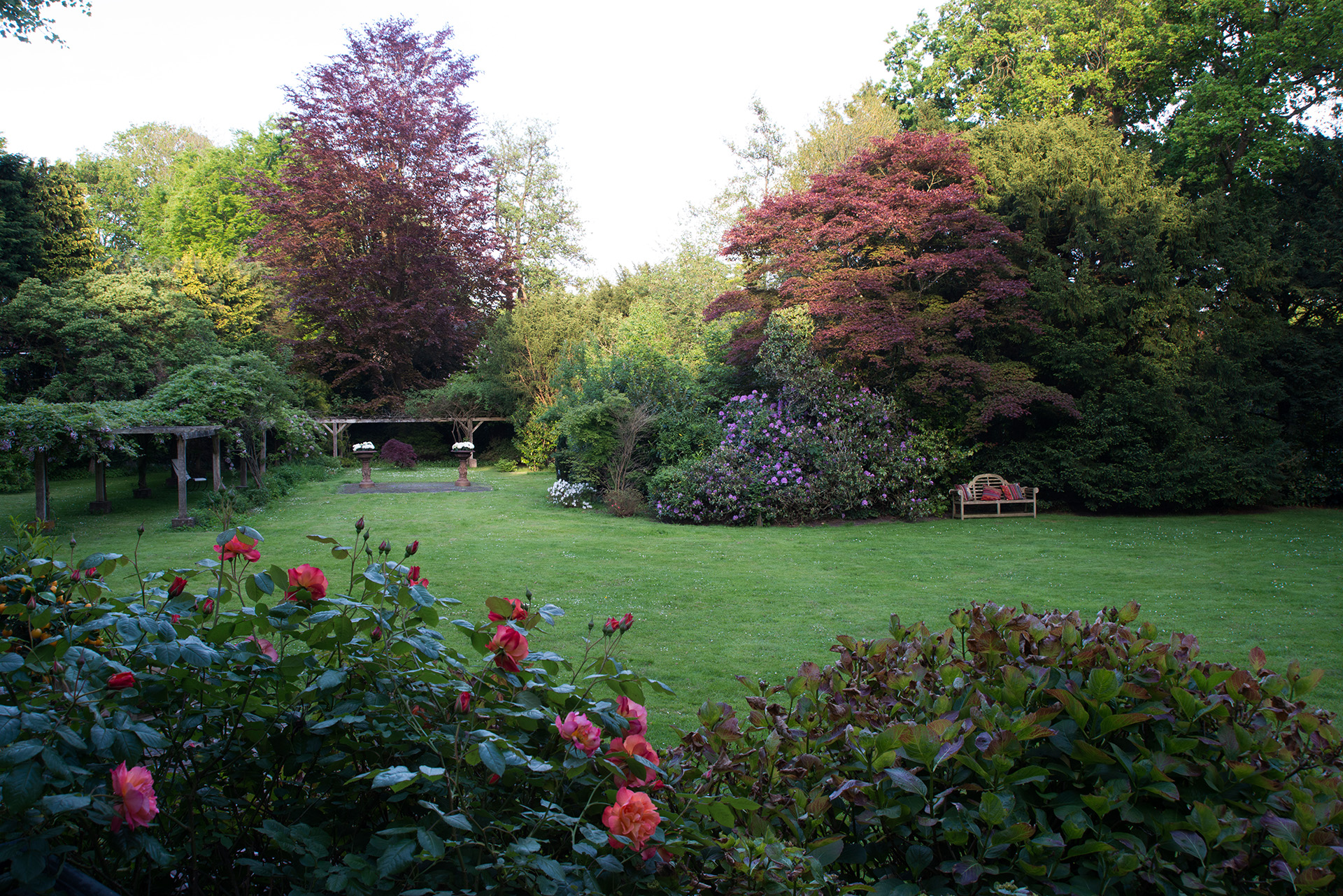

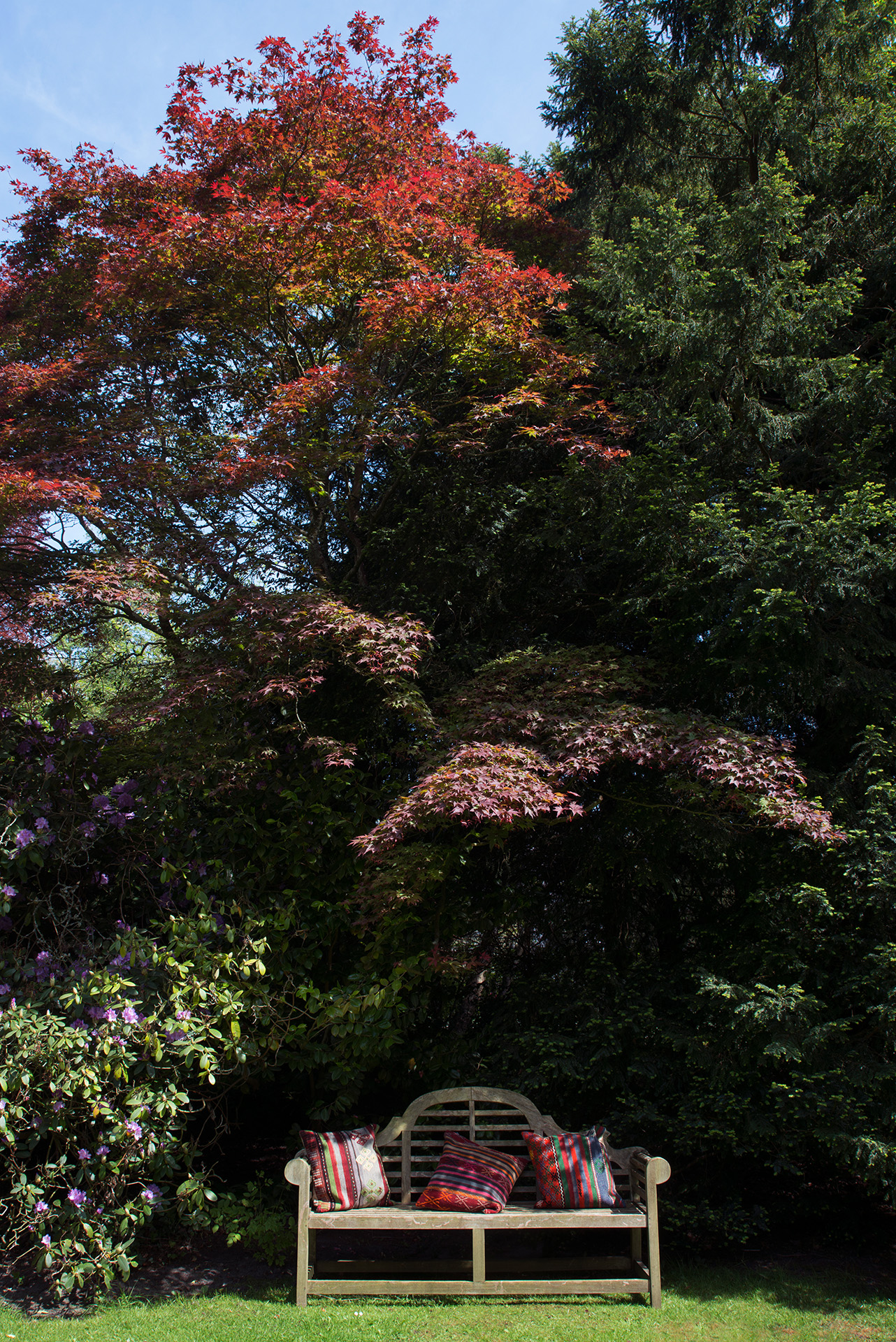
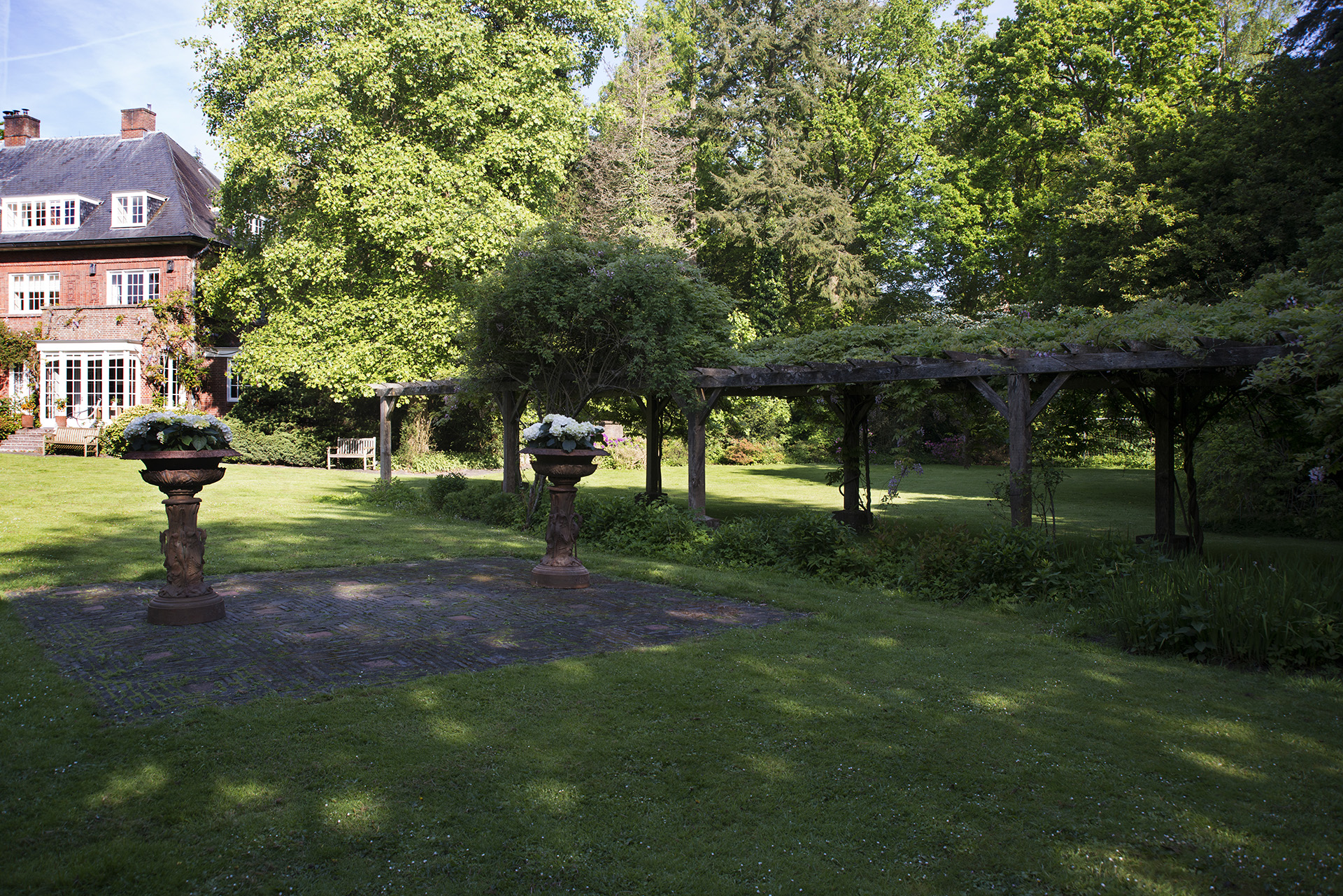
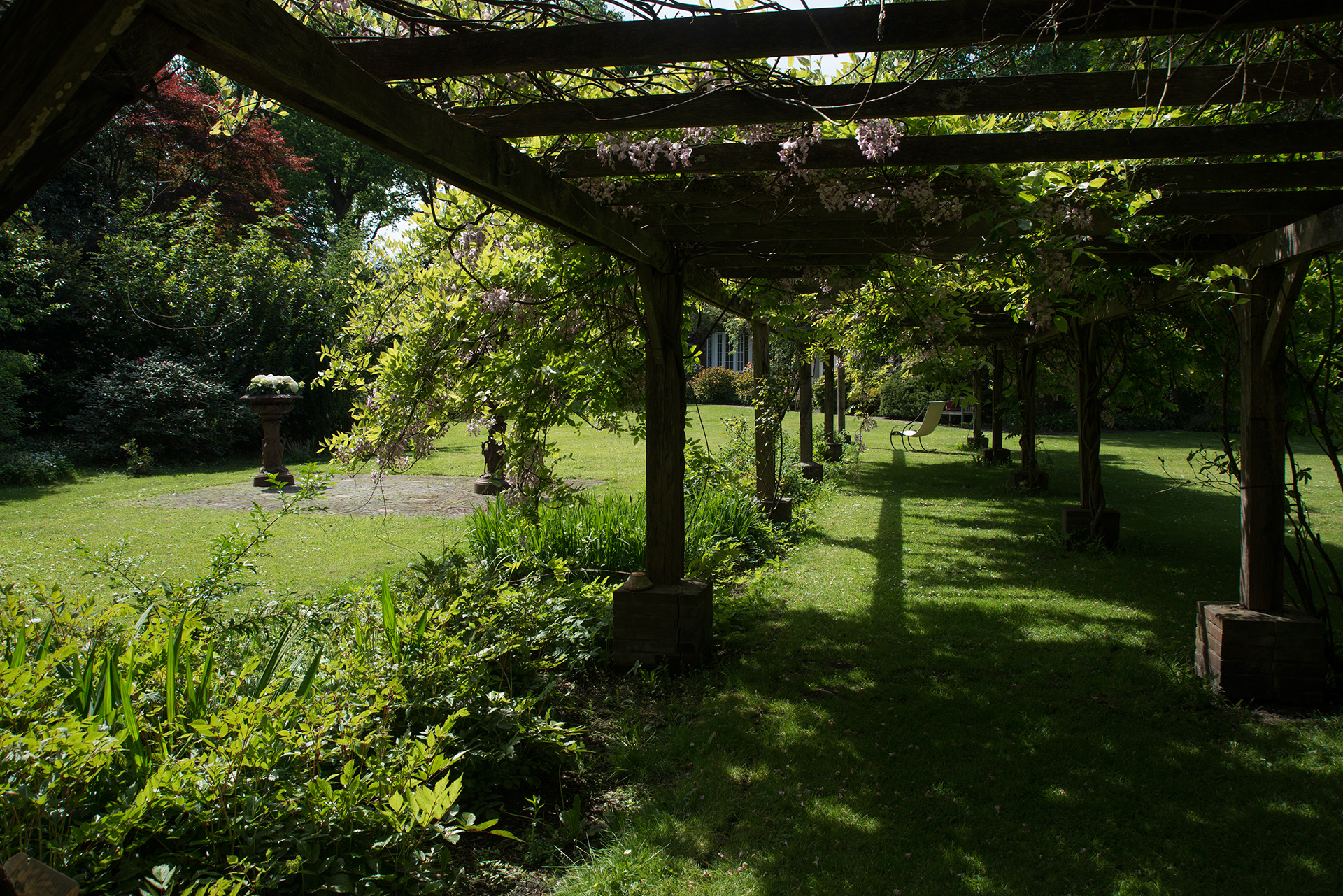
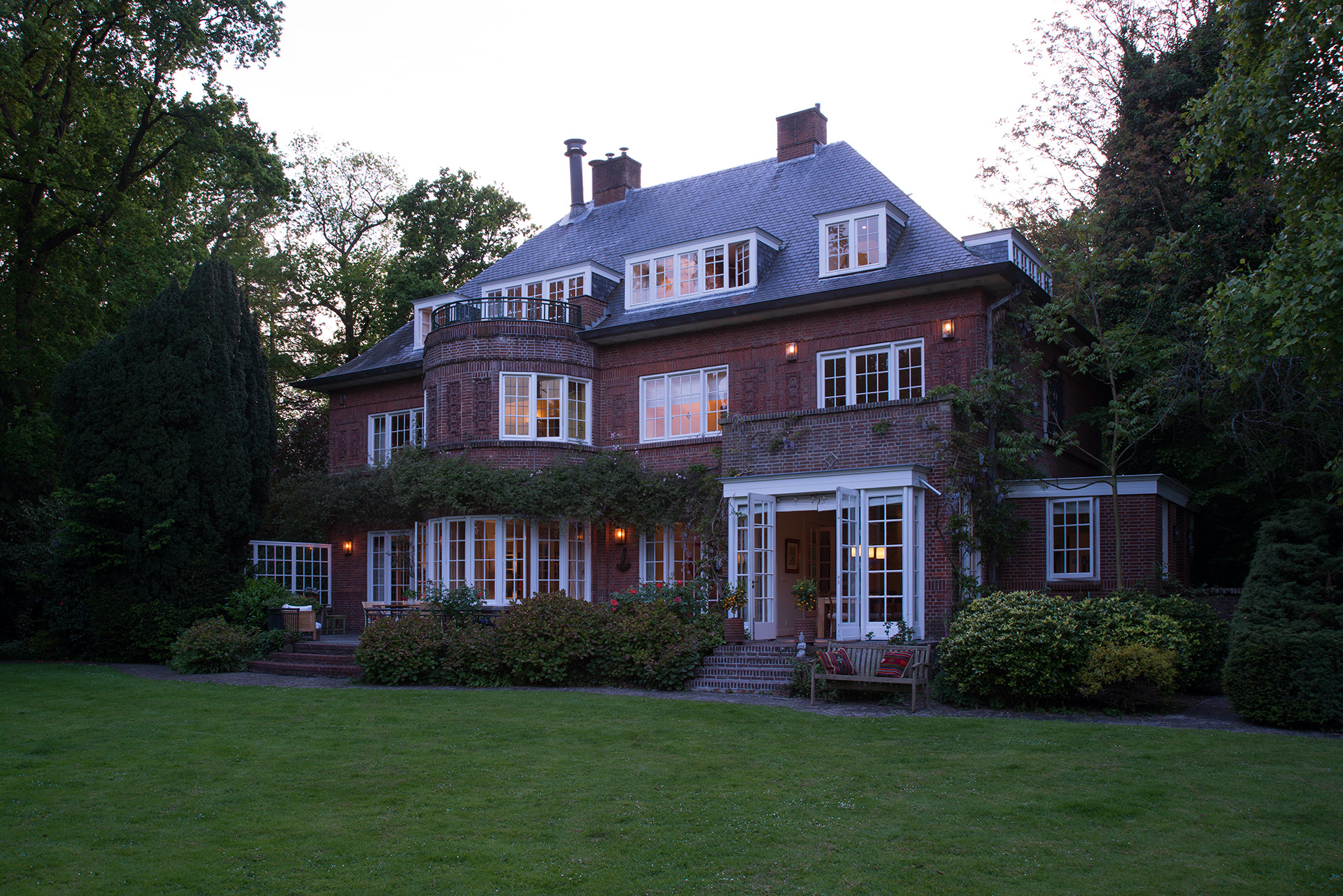
- For Sale
- Price Available Upon Request
- Build Size: 5,813 ft2
- Saleable Size: 5,393 ft2
- Land Size: 63,238 ft2
- Property Type: Private Villa
- Property Style: Villa
- Bedroom: 6
- Bathroom: 6
- Amenities: 2 Fireplaces, Barn, Furnished, Gardens, Hardwood Flooring, Historic, Library, Security System, Solar Power, Sprinkler System, Terrace/Outdoor Space, Wine Cellar/Grotto
Villa de Roemer - Groen van Prinstererlaan 11, Wassenaar, The Netherlands.
No architect defined the face of The Hague and Wassenaar during the Interbellum as much as Co Brandes (1884-1955), strongly influenced by the work of Frank Lloyd Wright.
"Villa De Roemer has something of the horizontal effect and the hoods protruding outside the façade that also characterise Wright's work. At the same time, with the round bay windows, there is something typically English in it. Villa de Roemer therefore occupies an important place in Brandes‘ oeuvre: it is an important link in the emergence of the New Hague School, perhaps the finest style produced by The Hague" says architectural historian Dr Pieter F. Vlaardingerbroek in his introduction of the villa.
Continued historical introduction by Dr Pieter F. Vlaardingerbroek:
In the years 1915-1916, Villa de Roemer was constructed for the cousins Roes. Paul Roes (1889-1955) was a celebrated concert pianist who resided in Paris from 1929 onwards, accompanied by his wife and impresario, Eeke Houwink. His cousin, Louis Emile Roes, was wed to Maria Hoogeweegen. Their fathers jointly managed a law firm. The two cousins hailed from a prosperous family of tanners in Wageningen, from which the NV Wageningsche Lederfabriek vh J.B. Roes en Zonen originated. Evidently, this enterprise generated sufficient capital to erect a fine house in Wassenaar.
The edifice comprises two storeys beneath a high hipped roof. The brick façades are adorned with decorative masonry. Above the entrance portico, the villa’s name is inscribed: DE ROEMER. This architectural ceramic work was crafted by the renowned W.C. Brouwer, who fabricated such materials in Leiden and supplied notable buildings such as the Peace Palace in The Hague.
A Roemer (also known as a Römer or Rummer, among other variations) was a type of large drinking glass commonly used for wine, studded with prunts to ensure a safe grip, popular mainly in the Rhineland and the Netherlands from the 15th through the 17th century.
The residency of the Roes family was brief, as the property was sold in 1920. The new proprietor was Friedrich Wilhelm Theodor Carp, married to Anna Petronella Mees. He was a partner in the Rotterdam wine merchant Carp & Co, and his wife hailed from a highly respected family in Maasstad. The villa’s name seemed more fitting for Carp than for the Roes family.
Presently, the house is famed as the work of architect Co Brandes (1884-1955). Though born into a modest family, his talents as a draughtsman were swiftly recognized. From 1902, he worked at the architectural firm Hoek and Wouters, transitioning in 1908 to the Haarlem office of J.A.G. van der Steur, known for his contributions to the Peace Palace, designed in 1907 by French architect L.M. Cordonnier.
Brandes’ disappointment was profound when he was not permitted to assist in the construction of the Peace Palace. He returned to Hoek and Wouters, becoming the designing architect in 1912. Brandes could produce designs in Renaissance style, late Jugendstil, or whatever was required. He soon became active in Wassenaar, where the affluent Rotterdam elite preferred to build houses in the woods. This natural setting called for a different architectural style, influenced primarily by England and America.
Villa construction flourished here, and knowledge of it spread throughout the Netherlands via publications. The esteemed architect H.P. Berlage traveled to America and extensively reported on the works of Frank Lloyd Wright. Jan Wils, who was a close friend of Co Brandes, worked in Berlage’s office in The Hague. Together, they became pioneers of the Nieuwe Haagse School, heavily influenced by Wright’s work.
This influence is evident in the villas in Wassenaar from the 1910s. Villa De Roemer exhibits horizontal lines and overhanging eaves typical of Wright’s style. Simultaneously, the round bay windows evoke a distinctly English character. Thus, Villa De Roemer holds a significant place in Brandes’ oeuvre: it is a pivotal link in the emergence of the Nieuwe Haagse School, arguably the finest architectural style produced by The Hague.
Villa De Roemer
A teak front door with rich forms under the front entrance portico grants access to the entrance hall of Villa De Roemer. Surrounding the house, various bay windows of red brick, arranged in a chain bond, illuminate the elevated first living floor abundantly. Glass doors around the entire house provide access to the outside, and nearly every room offers the possibility to step out onto the surrounding terraces. A strong connection between indoors and outdoors is evident in the various living spaces. The first and second floors contain a master bedroom, five additional bedrooms and/or offices, and four bathrooms.
Surrounding Gardens and Location
The architectural and urbanistic image of both the village of Wassenaar and the expanding city of The Hague was significantly shaped by Brandes’ work. A notable observation from the archives of architect Jacobus Johannes ("Co") Brandes (1884-1955) is his versatility. He was skilled in designing buildings and monuments and frequently designed gardens and landscapes, incorporating English and Japanese influences.
This is also true for the surrounding gardens of Villa de Roemer, where an impressive pergola of over 25 meters dominates the view. Much of Brandes’ original planting palette of deciduous trees and Japanese Maples (Acer Palmatum) remains intact, providing year-round privacy and shelter for the various terraces and the swimming pool. The Japanese Wisteria (Wisteria floribunda), planted over 70 years ago, adorns both the pergola and the villa's rear facade.
Villa De Roemer is situated on a plot exceeding half a hectare amidst the Langoederenzone Wassenaar-Voorschot. The landscape of Wassenaar is exceptionally diverse and contrasting. Within the municipality, three quintessentially Dutch landscapes are found: dune and beach, horst (forests), and meadow, with sharp boundaries between the hilly, wooded dune and horst and the flat, open agricultural hinterland.
The villa is ideally located within walking distance of various schools, tennis and golf clubs. Beach, forest, and dune are within easy reach. Both Rotterdam and Amsterdam airports are accessible in less than 25 minutes, and Amsterdam's city center is reached in less than 45 minutes.
Specifications:
Year of Construction: 1915-1916
Architect: Jacobus Johannes ("Co") Brandes (1884-1955)
Monumental Status: Nationally Protected Village or Cityscape
Plot:5875 m²
NEN-2580 Residential Floor Area: 501.3 m²
Gross Volume: 1995 m³
Number of Bedrooms: 6
Number of Bathrooms: 4
Sources:
[1] Kees Rouw, Co Brandes. Bouwmeester van de Nieuwe Haagse School, Rotterdam 2018
[2] Giovanni Fanelli, Moderne architectuur in Nederland 1900-1940 ‘s-Gravenhage, 1978.
[3] Archief G.A.'s-Gravenhage/Beheersnr.166, Code 50.1-84
Research & historical introduction: Dr Pieter F. Vlaardingerbroek
Textual additions & translations: Joep Hoogerwerf
Photography: Gloria Palmer
Film: Studio Van Brakel
No architect defined the face of The Hague and Wassenaar during the Interbellum as much as Co Brandes (1884-1955), strongly influenced by the work of Frank Lloyd Wright.
"Villa De Roemer has something of the horizontal effect and the hoods protruding outside the façade that also characterise Wright's work. At the same time, with the round bay windows, there is something typically English in it. Villa de Roemer therefore occupies an important place in Brandes‘ oeuvre: it is an important link in the emergence of the New Hague School, perhaps the finest style produced by The Hague" says architectural historian Dr Pieter F. Vlaardingerbroek in his introduction of the villa.
Continued historical introduction by Dr Pieter F. Vlaardingerbroek:
In the years 1915-1916, Villa de Roemer was constructed for the cousins Roes. Paul Roes (1889-1955) was a celebrated concert pianist who resided in Paris from 1929 onwards, accompanied by his wife and impresario, Eeke Houwink. His cousin, Louis Emile Roes, was wed to Maria Hoogeweegen. Their fathers jointly managed a law firm. The two cousins hailed from a prosperous family of tanners in Wageningen, from which the NV Wageningsche Lederfabriek vh J.B. Roes en Zonen originated. Evidently, this enterprise generated sufficient capital to erect a fine house in Wassenaar.
The edifice comprises two storeys beneath a high hipped roof. The brick façades are adorned with decorative masonry. Above the entrance portico, the villa’s name is inscribed: DE ROEMER. This architectural ceramic work was crafted by the renowned W.C. Brouwer, who fabricated such materials in Leiden and supplied notable buildings such as the Peace Palace in The Hague.
A Roemer (also known as a Römer or Rummer, among other variations) was a type of large drinking glass commonly used for wine, studded with prunts to ensure a safe grip, popular mainly in the Rhineland and the Netherlands from the 15th through the 17th century.
The residency of the Roes family was brief, as the property was sold in 1920. The new proprietor was Friedrich Wilhelm Theodor Carp, married to Anna Petronella Mees. He was a partner in the Rotterdam wine merchant Carp & Co, and his wife hailed from a highly respected family in Maasstad. The villa’s name seemed more fitting for Carp than for the Roes family.
Presently, the house is famed as the work of architect Co Brandes (1884-1955). Though born into a modest family, his talents as a draughtsman were swiftly recognized. From 1902, he worked at the architectural firm Hoek and Wouters, transitioning in 1908 to the Haarlem office of J.A.G. van der Steur, known for his contributions to the Peace Palace, designed in 1907 by French architect L.M. Cordonnier.
Brandes’ disappointment was profound when he was not permitted to assist in the construction of the Peace Palace. He returned to Hoek and Wouters, becoming the designing architect in 1912. Brandes could produce designs in Renaissance style, late Jugendstil, or whatever was required. He soon became active in Wassenaar, where the affluent Rotterdam elite preferred to build houses in the woods. This natural setting called for a different architectural style, influenced primarily by England and America.
Villa construction flourished here, and knowledge of it spread throughout the Netherlands via publications. The esteemed architect H.P. Berlage traveled to America and extensively reported on the works of Frank Lloyd Wright. Jan Wils, who was a close friend of Co Brandes, worked in Berlage’s office in The Hague. Together, they became pioneers of the Nieuwe Haagse School, heavily influenced by Wright’s work.
This influence is evident in the villas in Wassenaar from the 1910s. Villa De Roemer exhibits horizontal lines and overhanging eaves typical of Wright’s style. Simultaneously, the round bay windows evoke a distinctly English character. Thus, Villa De Roemer holds a significant place in Brandes’ oeuvre: it is a pivotal link in the emergence of the Nieuwe Haagse School, arguably the finest architectural style produced by The Hague.
Villa De Roemer
A teak front door with rich forms under the front entrance portico grants access to the entrance hall of Villa De Roemer. Surrounding the house, various bay windows of red brick, arranged in a chain bond, illuminate the elevated first living floor abundantly. Glass doors around the entire house provide access to the outside, and nearly every room offers the possibility to step out onto the surrounding terraces. A strong connection between indoors and outdoors is evident in the various living spaces. The first and second floors contain a master bedroom, five additional bedrooms and/or offices, and four bathrooms.
Surrounding Gardens and Location
The architectural and urbanistic image of both the village of Wassenaar and the expanding city of The Hague was significantly shaped by Brandes’ work. A notable observation from the archives of architect Jacobus Johannes ("Co") Brandes (1884-1955) is his versatility. He was skilled in designing buildings and monuments and frequently designed gardens and landscapes, incorporating English and Japanese influences.
This is also true for the surrounding gardens of Villa de Roemer, where an impressive pergola of over 25 meters dominates the view. Much of Brandes’ original planting palette of deciduous trees and Japanese Maples (Acer Palmatum) remains intact, providing year-round privacy and shelter for the various terraces and the swimming pool. The Japanese Wisteria (Wisteria floribunda), planted over 70 years ago, adorns both the pergola and the villa's rear facade.
Villa De Roemer is situated on a plot exceeding half a hectare amidst the Langoederenzone Wassenaar-Voorschot. The landscape of Wassenaar is exceptionally diverse and contrasting. Within the municipality, three quintessentially Dutch landscapes are found: dune and beach, horst (forests), and meadow, with sharp boundaries between the hilly, wooded dune and horst and the flat, open agricultural hinterland.
The villa is ideally located within walking distance of various schools, tennis and golf clubs. Beach, forest, and dune are within easy reach. Both Rotterdam and Amsterdam airports are accessible in less than 25 minutes, and Amsterdam's city center is reached in less than 45 minutes.
Specifications:
Year of Construction: 1915-1916
Architect: Jacobus Johannes ("Co") Brandes (1884-1955)
Monumental Status: Nationally Protected Village or Cityscape
Plot:5875 m²
NEN-2580 Residential Floor Area: 501.3 m²
Gross Volume: 1995 m³
Number of Bedrooms: 6
Number of Bathrooms: 4
Sources:
[1] Kees Rouw, Co Brandes. Bouwmeester van de Nieuwe Haagse School, Rotterdam 2018
[2] Giovanni Fanelli, Moderne architectuur in Nederland 1900-1940 ‘s-Gravenhage, 1978.
[3] Archief G.A.'s-Gravenhage/Beheersnr.166, Code 50.1-84
Research & historical introduction: Dr Pieter F. Vlaardingerbroek
Textual additions & translations: Joep Hoogerwerf
Photography: Gloria Palmer
Film: Studio Van Brakel


